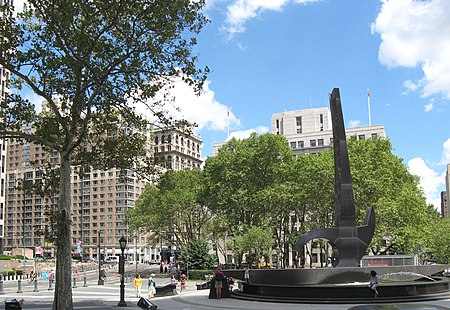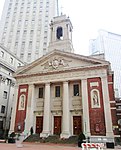Triumph of the Human Spirit
2000 establishments in New York City2000 sculpturesAbstract sculptures in New York CityAfrican-American history in New York CityCivic Center, Manhattan ... and 6 more
Fountains in New York CityGranite sculptures in New York CityMonuments and memorials in ManhattanNew York (state) sculpture stubsNew York City stubsOutdoor sculptures in Manhattan

Triumph of the Human Spirit is a 2000 black granite sculpture by Lorenzo Pace, installed at Manhattan's Foley Square, in the U.S. state of New York. According to the City of New York, the 50-foot (15 m), 300-ton, abstract monument is derived from the female antelope Chiwara forms of Bambaran art. The sculpture is sited near a rediscovered Colonial-era African Burial Ground, and its support structure alludes to the slave trade's Middle Passage. The work was commissioned by the New York City Government program Percent for Art.
Excerpt from the Wikipedia article Triumph of the Human Spirit (License: CC BY-SA 3.0, Authors, Images).Triumph of the Human Spirit
Foley Square, New York Manhattan
Geographical coordinates (GPS) Address External links Nearby Places Show on map
Geographical coordinates (GPS)
| Latitude | Longitude |
|---|---|
| N 40.71445 ° | E -74.00289 ° |
Address
Triumph of the Human Spirit
Foley Square
10278 New York, Manhattan
New York, United States
Open on Google Maps









